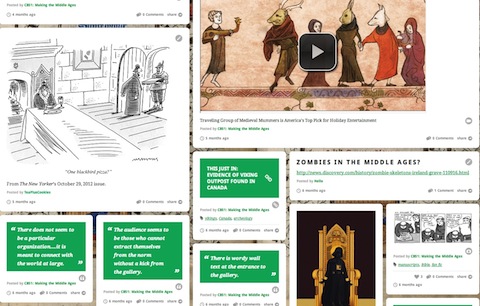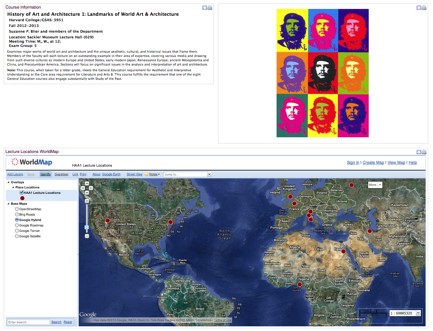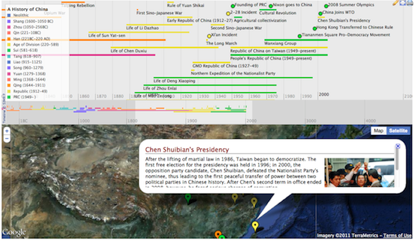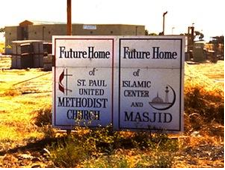Project Report: Making the Middle Ages
ø

Culture and Belief 51: Making the Middle Ages focuses on the cultural and historical context of five objects (things, texts, and manuscripts) that students unpack through lectures and projects. The course offers students “a great adventure into the unknown,” an opportunity to unlock their own talents while exploring the cultures and beliefs of medieval Europe.
The goals in Professor Daniel Smail’s PITF proposal for this course included:
- Preparing a photo-sharing program that Professor Smail could access easily in class
- Generating a means that would allow students to map out the radiation of saintly cults in later medieval Europe
- Developing a resource for students to produce an electronic collection of objects
- Modifying Professor Smail’s “Collaborative Research Tool” for this course so that students could practice text markup and engage in an ungraded collaborative project
ATG staff and PITFs created a Tumblr page for the course where students posted photos, videos, and comments on what seemed “medieval” to them; made a class map using WorldMap so that students could each add a layer mapping a saintly cult or pilgrimage; built a collective virtual gallery on Zeega; and set up a course wiki for the “Collaborative Research Tool.”
To see the full extent of the materials developed for this course, check out the course iSite and Tumblr page.










